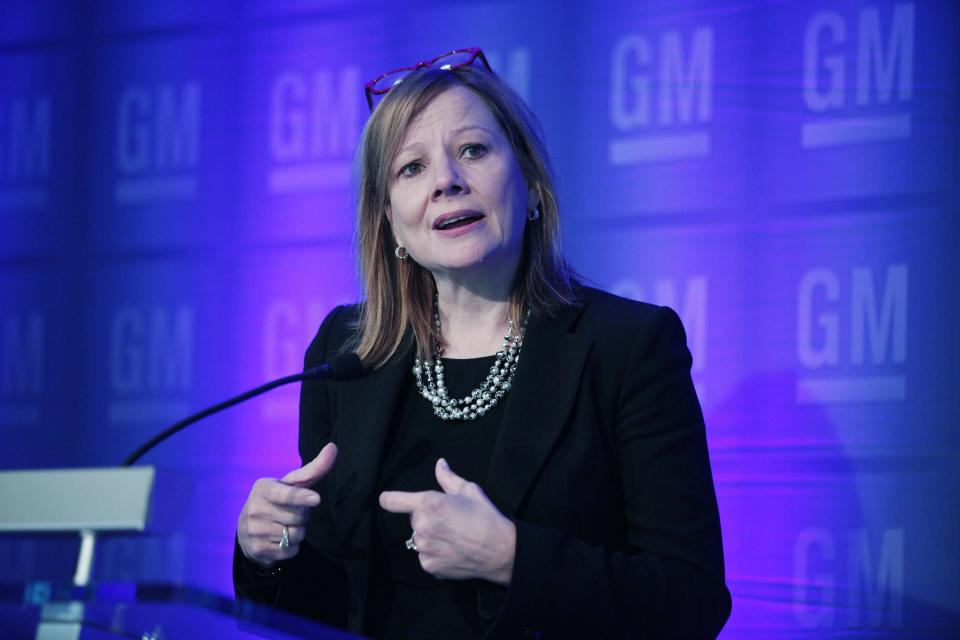'They are not going to let things slip:' GM CEO's strategy bold, tough – and risky

Two years after she took over as chief executive of General Motors Co., Mary Barra pledged that the American automaker was not going to fear the technological disruption that was headed for the industry.
“The auto industry is changing faster today than it has in 100 years,” she wrote in a post published in Forbes in January 2016.
“Many facets of the traditional industry are being disrupted, and we at GM believe this creates exciting new opportunities.”
On her way to conquer those new opportunities, Barra has been seemingly unafraid of making bold, tough decisions that have shuttered plants and left thousands without jobs. Her latest move came Monday, when the automaker announced a major restructuring plan that will see up to 14,000 workers in North America lose their jobs, nearly 3,000 of which are in the Oshawa Assembly plant. GM will “unallocate” production at the Oshawa factory and four others, meaning production will halt next year unless new vehicle programs are assigned to those plants.
The restructuring plan, which will save the company $6 billion annually, was in part a response to changing consumer demand, which has shifted towards sports utility vehicles and trucks. But it is also part of a broader shift at GM that will see the company focus more on its electric and autonomous vehicle programs.
It’s certainly a bold strategy, but one that comes with both short and long term risks, said Michelle Krebs, a senior analyst with Autotrader. In the immediate term, Krebs says the company will be saddled with a disgruntled work force, and risks losing sales and market share as it stops producing some passenger cars currently in its vehicle lineup.
“But the long term risk is that GM is putting all of its eggs in the electric and autonomous vehicle basket. While they have a vision of the timing of all of it, it’s subject to much debate,” Krebs said.
“We haven’t seen much consumer acceptance of electric vehicles in North America… and we don’t know when autonomous vehicles are really going to proliferate the market. They are putting a lot of money into these technologies, and it’s not clear when the payback will be in terms of profits.”
GM made the announcement less than a month after reporting better-than-expected profit in its third quarter financial results. Kristin Dziczek, vice president of economics at the Center of Automotive Research (CAR), said it shows that the company isn’t willing to wait for results to slip before taking drastic action on changing operations.
“This is coming at a time when sales are pretty steady, and they are still posting solid profits… Usually those corrective actions get taken care of as thing start to slip,” she said.
“They are not going to let things slip before they need corrected action.”
Rebecca Lindland, executive analyst at Kelley Blue Book, said this was the right time for GM to undergo this major restructuring plan.
“Now is the time to do this. You don’t undergo major surgery when you have the flu,” Lindland said.
“This is a time when the company is resilient and has a healthy balance sheet.”
Lindland said while the decision to drastically cut the workforce was not one that was likely, it may have been necessary, given the rapidly changing automotive industry.
“Making these very difficult and painful decisions now does set them up to be more flexible and more agile going forward, and to potentially hire more engineers,” Lindland said.
“I’m certainly hoping these plants get repurposed, but the cold, bitter reality is that the industry is changing. The skills needed are changing, and they are changing rapidly.”
It’s certainly not the first time in Barra’s nearly five-year tenure as chief executive that she has made bold decisions. Since her arrival, GM has announced pullbacks of production in Russia, India and South Africa. In 2017, the company sold Opel, its European decision, to the PSA Group for $2.3 billion.
“The history of the auto industry has been that they wait until a crisis is in their lap, and then they make panicked moves,” Krebs said.
“Clearly, they are trying to shore things up.”
Download the Yahoo Finance app, available for Apple and Android.

 Yahoo Finance
Yahoo Finance 
